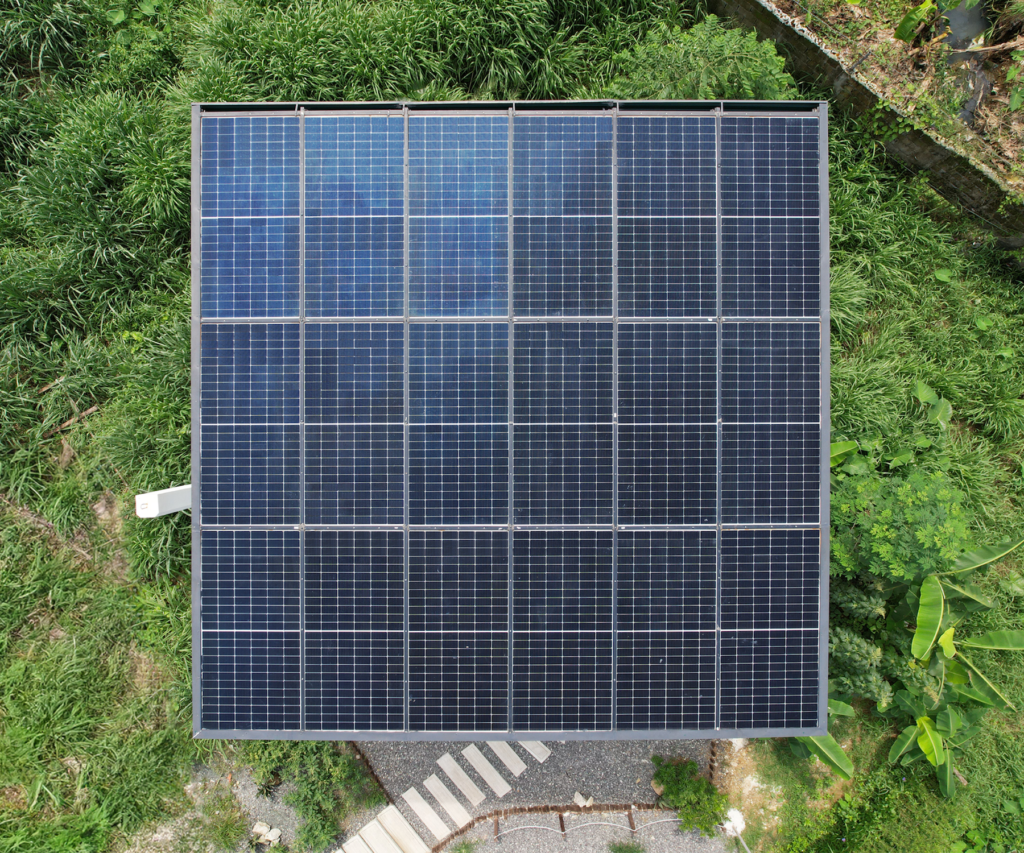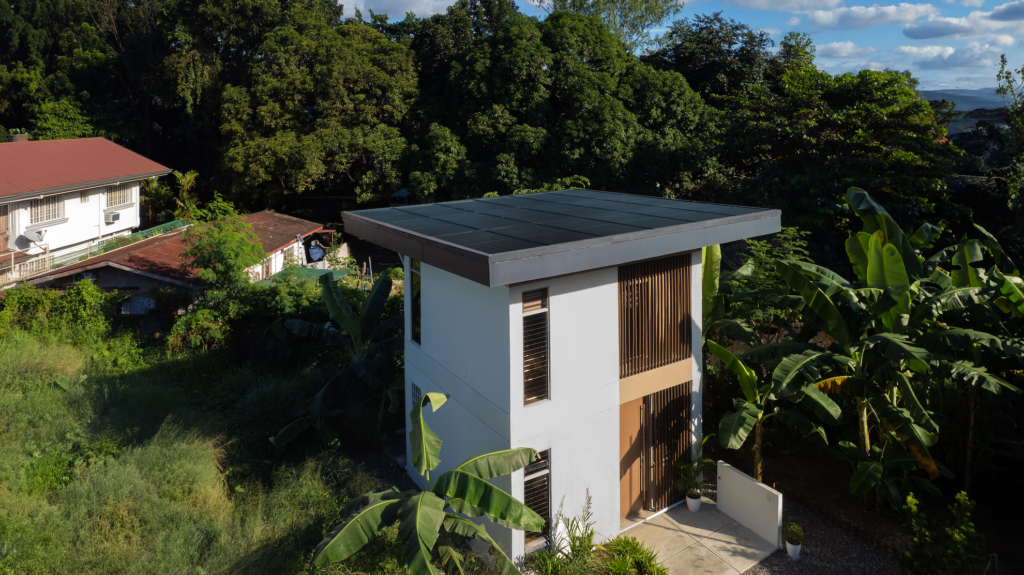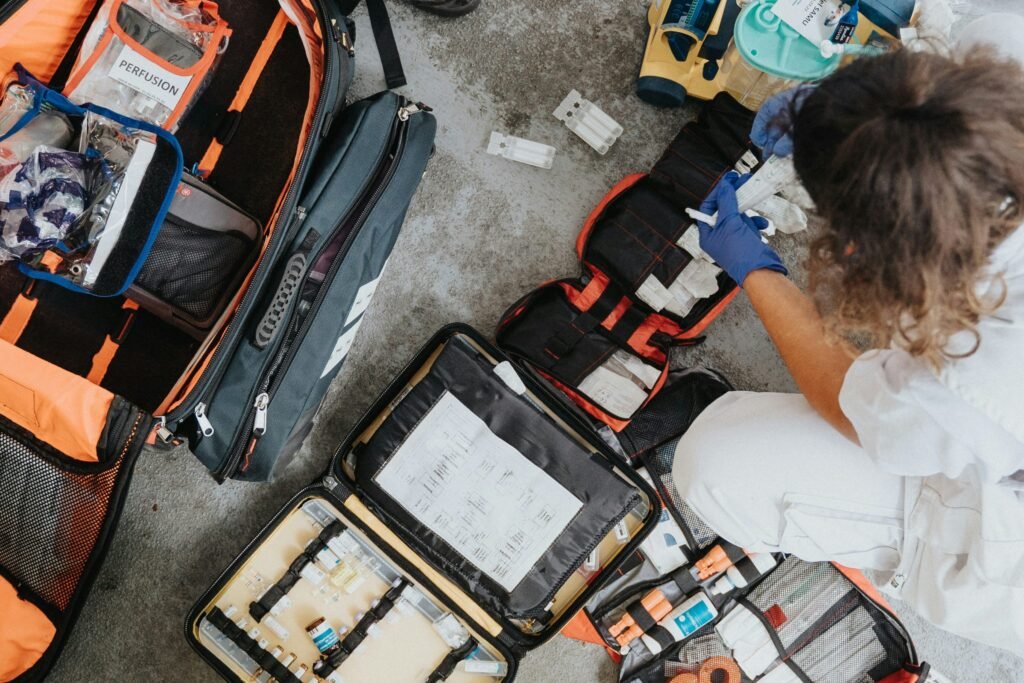Let’s be real; when you live in the Philippines, you learn to expect the unexpected from the weather. One minute it’s sunny and humid, the next thing you know, a thunderstorm rolls in like it owns the place. And don’t get us started on typhoon season; our country sees an average of 20 typhoons per year. That’s more than our annual birthday parties combined.
So, when we talk about putting a solar roof on your home, one that also powers the entire house, the number one question most of us have is: “Kaya ba ’yan ng bagyo?”
The short answer: Yes.
The long answer: Yes, and there’s so much more to it.
Let’s walk through exactly how PowerShade, the integrated solar roof developed by BillionBricks, is designed to survive and thrive, through our wild weather, and how you can keep it in top shape with a little bit of maintenance (don’t worry, nothing too technical).

What is PowerShade?
PowerShade isn’t your usual “solar panel systems” type of setup. This is a weatherproof solar roofing system that’s also the actual roof, meaning it doesn’t just sit on top of your house, it is the roof. It generates 100% of your home’s electricity with a sleek and modern look.
Now let’s get to the big question: What happens when Mother Nature throws a tantrum?
Here are some key things to remember about PowerShade:
1. Typhoons? PowerShade Says “Game On”
When you live in a country where storm names start sounding like teleserye villains (Typhoon Egay, anyone?), it’s only fair to be concerned about roofing durability.
PowerShade was designed with tropical resilience in mind. That means it can handle strong winds, pounding rain, and yes, even the kinds of weather that force you to cancel a beach trip with the barkada.
What you’ll like most about this is its low-profile design which isn’t just for aesthetic purposes—it actually reduces wind drag, so it doesn’t catch gusts like traditional roofs do. No more “lipad-bubong” moments when the wind howls at 100 km/h. That kind of structural integrity helps families feel safe, not just powered.
2. Heat? PowerShade doesn’t just survive, it performs

We all know how hot it gets here. In fact, the Philippines experience a little over 300 sunny days in a year. Traditional roofing materials like metal can absorb and trap heat, making your house feel like an oven. PowerShade? It’s built to absorb the sun for energy, not for cooking you alive inside your own home.
Plus, homes with PowerShade are usually paired with smart passive designs, like cross-ventilation, large windows, and natural lighting, to reduce the need for cooling in the first place. And let’s be real: anything that reduces the need for turning on the aircon 24/7 is a win for your wallet.
3. Rain and Flooding? The roof that seals the deal
Heavy rains are practically part of our national identity. But leaks? Hindi na uso ’yan.
PowerShade’s structure includes built-in water drainage systems to keep water flowing where it should—outside, not dripping into your bedroom at 3 a.m. It’s engineered to keep your house watertight, even during those massive downpours that have you questioning your life decisions.
Even better, BillionBricks makes sure electrical components are protected and placed in safe, elevated areas. So when the floodwaters rise (because, let’s be honest, they will), you’re not left worrying about short circuits or brownouts.
4. Earthquakes? Built with Structural Integrity
This one’s for our friends in Luzon and Mindanao, where earthquakes remind us just how shaky things can get, quite literally.
PowerShade homes are not only solar-powered but also structurally reinforced. The integration of the roof and energy system means fewer loose parts and less risk of damage from sudden movements. It’s one of those designs where less really is more; less clutter, fewer parts, and lower chances of disaster damage.
5. Real Talk: What maintenance do you actually need?
Now, let’s say you’ve got your dream PowerShade home. Congrats! But just like a good car or a reliable rice cooker, a little maintenance goes a long way.
✔ Clean it occasionally
We’re not saying you need to climb up there every Sunday, but give the panels a light rinse every now and then. Dust, leaves, and the occasional bird souvenir can reduce solar efficiency.
Pro tip: use a hose and a long-handled mop or soft cloth. No need to scrub like you’re doing your weekend labada.
✔ Do a visual check after major storms
Once the sky clears, take a look at your roof. If anything seems off—a panel looks misaligned, or there’s a tree branch that wasn’t invited—call it in. Better safe than sorry, diba?
✔ Schedule a pro check-up every year or so
Even if nothing seems wrong, have your solar roof checked out by a technician. Think of it as your home’s annual checkup. It’s a small step to ensure that everything stays safe and efficient.
6. Hidden Bonus: Cost savings that last
Let’s not forget the quiet benefit of PowerShade, it’s not just about protection from extreme weather. It’s also about long-term savings.
Imagine cutting your electricity bill by 50%, 70%, or even down to zero. And in some setups, you might even earn a little by selling extra energy to microgrids. In the long run, that’s a financial buffer that helps families weather literal and economic storms.
And unlike traditional roofing that gives you nothing but shade and maintenance costs, PowerShade pays itself off by doing the work of your roof and your electric bill combined.
So, does PowerShade hold up in extreme weather? Absolutely.
It’s a practical, durable, and forward-thinking solution made for Filipino families, built for typhoons, made for the heat, and backed by a vision that goes beyond just housing.
If you’ve ever dreamed of living in a home that’s strong, stylish, and self-sufficient, PowerShade might just be what you’re looking for.
And let’s face it: when your roof starts paying your bills and survives a typhoon better than your car, that’s more than a win. That’s the future.
PowerShade can be used for commercial projects such as public transportation shelters, warehouses, parking lots, and others. Got a project in mind? Contact us at hello@billionbricks.org.
References:
- BillionBricks. (n.d.). BillionBricks’ Mission: Accessible Sustainable Living. Retrieved from https://billionbricks.org/billionbricks-updates/billionbricks-mission-accessible-sustainable-living
- SolarTech. (n.d.). Typhoon-Proof Energy: Solar Panels Built for the Philippines’ Weather Challenges. Retrieved from https://solartech-inc.com/blog/typhoon-proof-energy-solar-panels-built-for-the-philippines-weather-challenges
- Hunterdon Siding & Window Company. (n.d.). Solar Roofing Maintenance Tips. Retrieved from https://www.hunterdonsiding.com/posts/solar-roofing-maintenance-tips
- GAF Energy. (n.d.). How to Maintain a Solar Roof. Retrieved from https://www.gaf.energy/faq/how-to-maintain-a-solar-roof
- Solenergy Systems Inc. (2022). After Typhoon Odette: Helping Communities Through Solar. Retrieved from https://solenergy.com.ph/typhoon-odette



